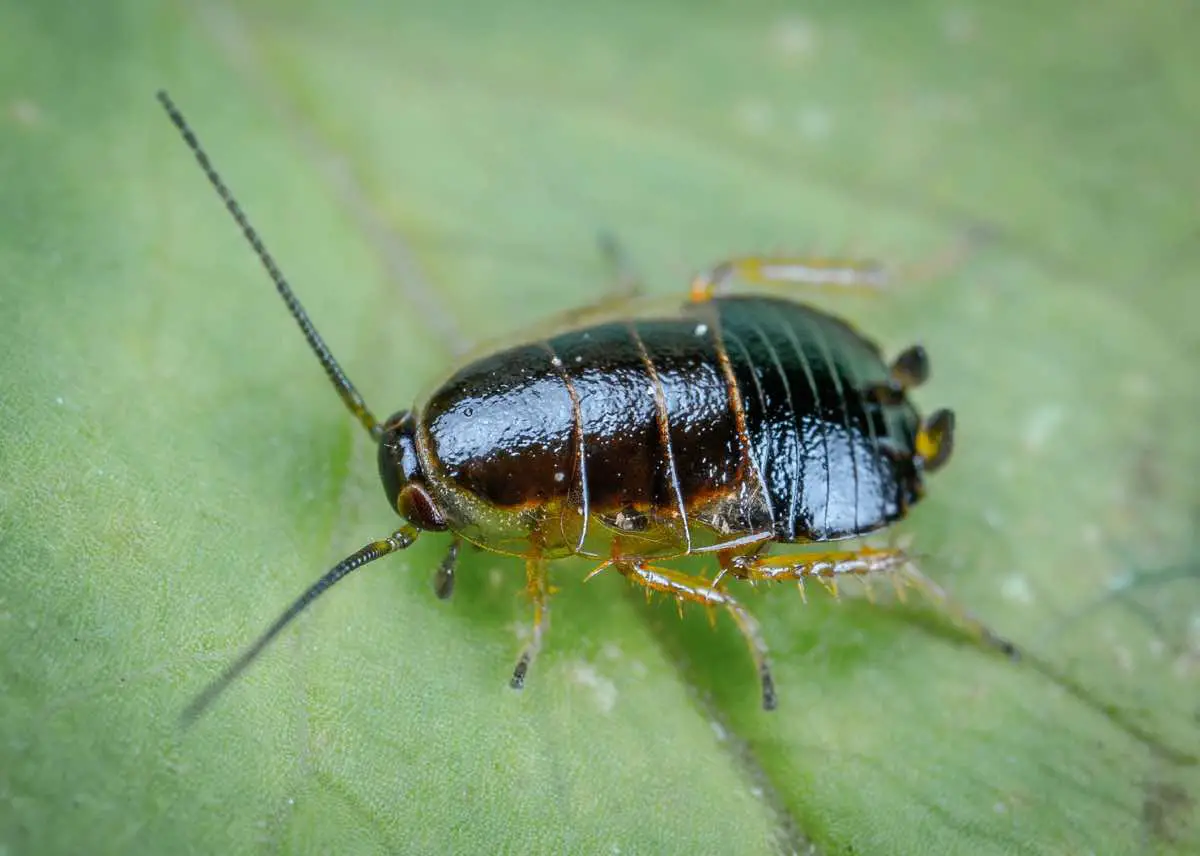This post may contain affiliate links.
Ladies and gentlemen, let’s talk about the elephant in the room… or should I say, the cockroach in the kitchen? These little buggers are everywhere, ain’t they? You can’t go a day without seeing one scurrying around your house or apartment. But have you ever stopped to wonder where these creepy crawlies came from?
How Long Have Cockroaches Been Around?
Well, let me tell you, cockroaches have been around for a long, long time. Like, way longer than us humans. According to a study by Dr. George Beccaloni of the Natural History Museum in London, cockroaches have been around for about 320 million years (Beccaloni, G. (2019). The Evolution of Cockroaches. Scientific American).
Imagine all the things they’ve seen – dinosaurs, woolly mammoths, the invention of the internet. And it all started back in the good ol’ Carboniferous period, when the earth was all hot and steamy like a sauna. And all the continents were BFFs on this supercontinent called Gondwana. Scientists think that’s where cockroaches first crawled outta the woodwork, ’cause they found some fossils in the coal mines there. Mind blown yet?”
And just like us humans, cockroaches have evolved over time to adapt to different environments. There are over 4,000 species of cockroaches in the world (University of California Agriculture and Natural Resources), and they can be found on every continent except Antarctica.
Some cockroaches prefer the warmth and humidity of tropical forests, while others thrive in the dry deserts. But the one thing they all have in common? They’re experts at hiding in our homes and buildings.
So, there you have it. Cockroaches have been around for eons and they ain’t going anywhere anytime soon. Even their name has been around for a while – even wonder how cockroaches get their name? But don’t worry, we’ll have a few more laughs about these little critters in the next sections.
Evolution of Cockroaches
Alright folks, let’s dive a little deeper into the history of these little critters. As I mentioned earlier, cockroaches have been around for about 320 million years. Can you even imagine? They’ve seen some stuff, let me tell ya.
But let’s go back to the beginning, shall we? The first cockroaches were probably small, wingless creatures that scurried around in the underbrush (Beccaloni, G. (2019). The Evolution of Cockroaches. Scientific American). They were probably pretty similar to the wood roaches you might find in a forest today. But as time went on, these little buggers started to evolve and adapt to different environments.
For example, some cockroaches developed wings so they could fly and escape from predators. And you know what that means? Yes, folks, flying cockroaches. I know, I know, it’s a nightmare. But on the bright side, not all cockroaches can fly, so there’s that.
Other cockroaches developed a taste for different types of food. Some cockroaches are scavengers and will eat just about anything, while others are picky and only eat certain types of plants. And let me tell you, cockroaches can eat some weird things. According to a study by Dr. Coby Schal of North Carolina State University, cockroaches have been known to eat book bindings, glue, and even each other (Schal, C. (2010). Cockroach Diets and Feeding Behavior. Journal of Economic Entomology).
And they reproduce like crazy, you can check out the cockroach life cycle to see just how they do it.
So, there you have it folks, a brief history of the evolution of cockroaches. From small, wingless creatures to flying, plant-eating monsters. It’s like a horror movie, but it’s real life.
Cockroach Distribution – Where To Find Them In the World
Alright, let’s talk about where these creepy crawlies can be found. Now, I know what you’re thinking, “they’re everywhere, aren’t they?” And yeah, that’s kind of true. In fact, you can even find them in the human body! Cockroaches can be found all over the world, but they’re not equally distributed.
For example, some species of cockroaches are tropical creatures and can only be found in warm, humid climates. These guys are like little vacationers, they love the heat and the humidity. Like many people, they also love places like California. But, other species are more adaptable and can survive in a wider range of temperatures.
But, the most common species of cockroach in the United States is the German cockroach (Blattella germanica). According to a study by the University of Kentucky, the German cockroach is the most common cockroach found in homes and buildings throughout the country. This little bugger is about half an inch long, and it’s light brown with two dark stripes on its head. (University of Kentucky, College of Agriculture, Food and Environment. (2019). German Cockroach. Entomology.)
So, if you’re living in the U.S., chances are, if you have cockroaches, you have German cockroaches. But don’t worry, they’re not harmful to humans, they’re just unsanitary and a nuisance.
But, if you want to avoid them altogether, you can try moving to a colder climate. Cockroaches can’t survive in temperatures below freezing, so if you’re looking to avoid these creepy crawlies, try living in the Arctic. Or, you can always move to a desert. But let me tell you, deserts have their own set of problems.
Cockroach Migration
Alright, so we’ve talked about where cockroaches can be found naturally, but what about when they show up in places they’re not supposed to be? Like, in your kitchen, or worse, your bedroom? And ever wonder if they can bite? How do they get into your house? Well, my friend, that’s where cockroach migration comes in.
Cockroaches are pretty good at finding new places to live, and they’ll take any opportunity they can to move to a new location. Sometimes, they’ll hitch a ride on a piece of furniture or a grocery bag, and before you know it, you’ve got cockroaches in your house. Make sure you know how to get rid of cockroaches. In fact, watch out for those Amazon boxes… Prime Delivery may be delivering you a lot more than you expect! But, other times, cockroaches will migrate to new areas on their own.
A study by the University of Arizona found that the American cockroach (Periplaneta americana) can travel up to 98 feet in a single night. That’s like running a marathon, but for a cockroach. (University of Arizona. (2019). American Cockroach. Entomology.)
But, it’s not just the cockroaches that are responsible for their migration, humans play a big role too. For example, global trade has allowed cockroaches to travel around the world, and they’ve been able to establish themselves in new areas.
So, if you’re seeing cockroaches (and not beetles which also have a long history) where they’re not supposed to be, it’s probably not just because they’re following their natural migration patterns, it’s probably because we’ve helped them get there.










